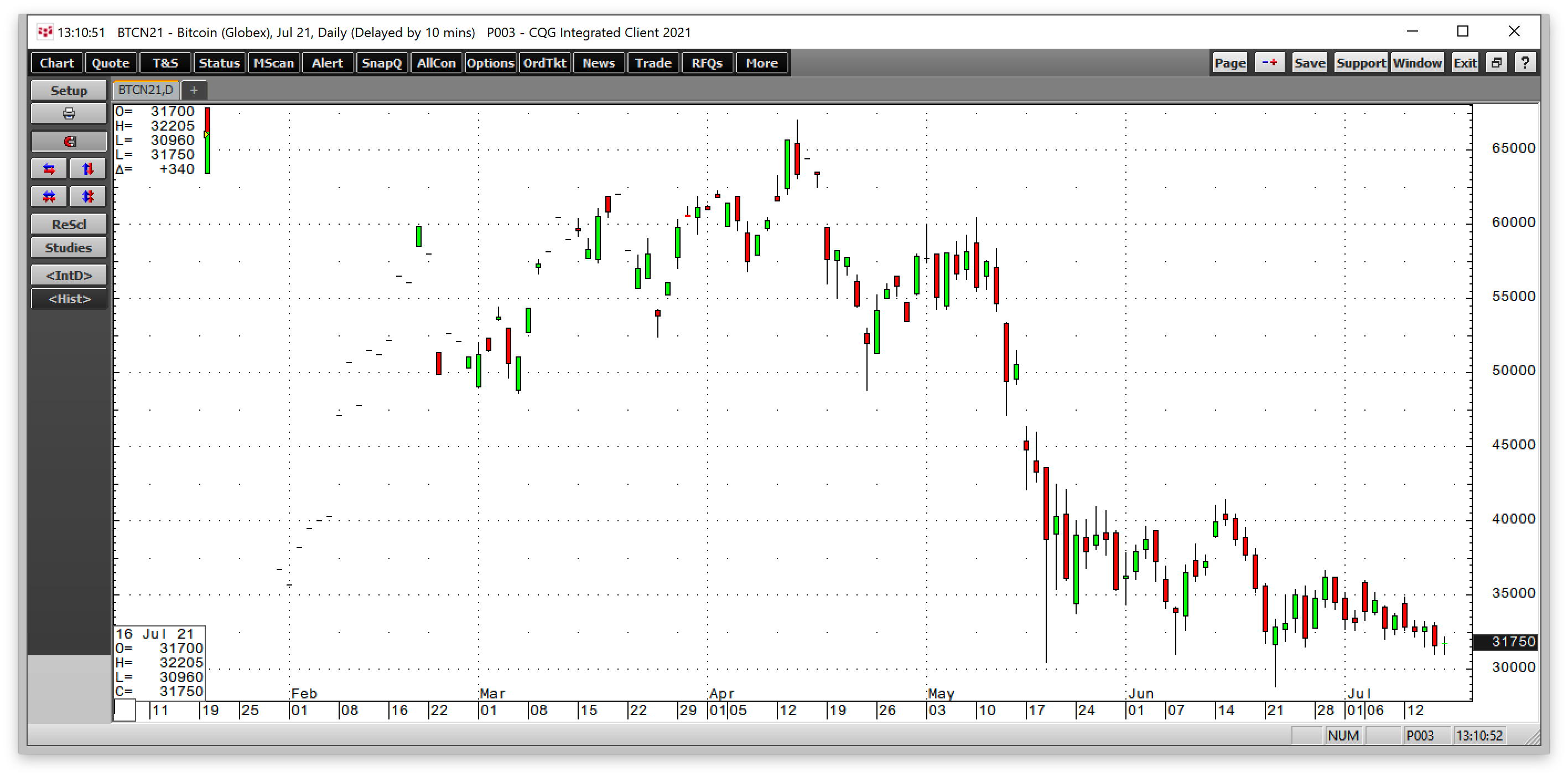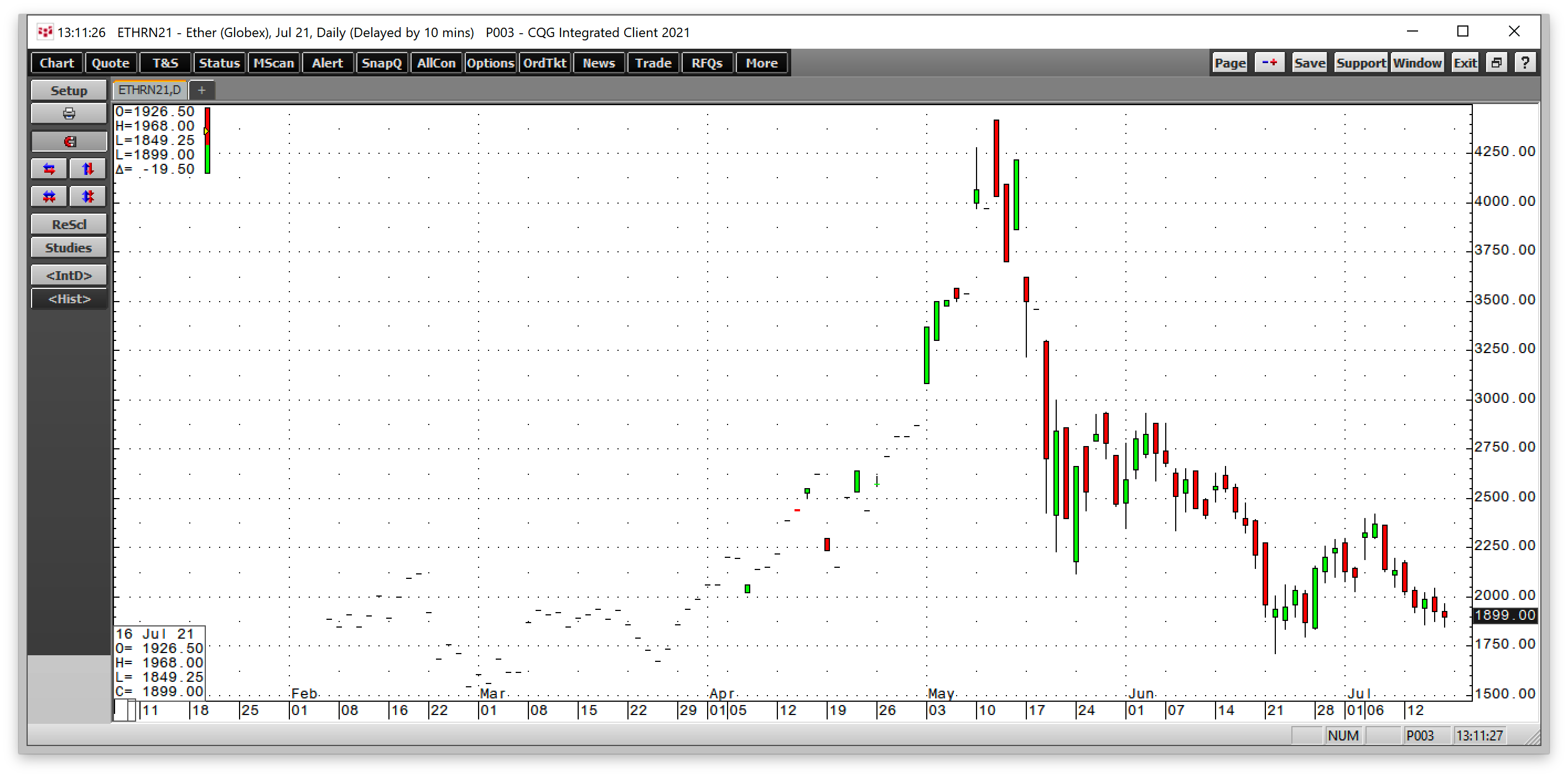This article was written exclusively for Investing.com.
- Cryptocurrencies have gone to sleep
- Market consolidation is healthy
- Consolidation at bottom of trading range can be dangerous
- The case for another set of higher highs
- The case for lower lows
Parabolic price action can be like shooting stars. It is virtually impossible to pick tops or bottoms in any market as prices often rise or fall to levels that defy logic, reason, and rationality. Trading with trends therefore tends to be an optimal approach as it respects market trajectories, price paths driven by sentiment, a powerful force.
And of course, sentiment can run contrary to supply and demand fundamentals.
This means therefore that at any time, the price of an asset is always the correct price because it is the level where buyers and sellers meet in a transparent environment, the market. Traders and investors often get into trouble when they believe the market price is wrong.
Invariably, emotion leads to this conclusion as it is a psychological, feelings-driven response to being on the wrong side of a trend. I have experienced the most significant losses in markets, which provided the most valuable lessons when I let my ego get in the way of understanding that my only friend in markets is the price trend.
Eliminating emotion and reacting to market price action instead of overthinking price levels has made me a better trader and investor. Refining the process increased my ability to ride a trend higher or lower.
Starting in 2020, the cryptocurrency asset class embarked on one of the most aggressive bull markets I've ever witnessed. Bitcoin rose to over $65,500 per token, Ethereum eclipsed the $4,400 level, and many other nearly 11,000 tokens experienced parabolic price gains.
In April and May, the asset class peaked at a combined market cap of over $2.4 trillion when gravity caused them to come back down to earth. After halving in value, Bitcoin and Ethereum have entered into a sleepy period, with price consolidation near the recent lows.
Cryptocurrencies have gone to sleep
Bitcoin’s trading pattern since mid-April remains ugly. However, after making a low at $28,840 on the July futures contract on June 22, the price has been consolidating, sleeping, and continues to display a bearish trend. 
Source, all charts: CQG
As the daily chart highlights, since June 22, Bitcoin’s range has been from $28,840 to $36,650 per token. At the $32,000 level at the end of last week, Bitcoin was sitting just below the middle of its trading band.

Over the same period, Ethereum futures have traded from a low of $1710.75 to $2420.75. At the $1940 level, Ethereum was also below the midpoint of its trading range on July 16.
Meanwhile, the two leading cryptocurrencies that account for 63.2% of the asset class’s market cap have gone to sleep near their recent lows.
Market consolidation is healthy
The incredible trajectories of the rallies that took Bitcoin and Ethereum to highs in April and May were unsustainable. Many market participants knew this, but stepping in front of the wildly bullish trend was like trying to stop a freight train; it was dangerous.
The decline that has more than halved Bitcoin, Ethereum, and many other cryptocurrencies over the past weeks could be the healthiest factor for the asset class. Markets that experience parabolic moves need time to digest the price appreciation.
While some continue to see a parallel with the tulip bulb frenzy in Holland in the 1600s, cryptos are far different. They reflect the deteriorating trust in central banks and governments when it comes to money. They are a libertarian asset class that removed the power of the money supply from rulers and returned it to individuals.
The limited supplies of the tokens are a statement that supporters strive for austerity and are a free market concept as their prices are determined only by bids and offers in the market.
Aside from criticism that their anonymity affords nefarious users the ability to hide from the clutches of tax, regulatory, and prosecutorial agencies, proponents believe they are stores of wealth that will protect their assets while inhibiting individual governments and supranational forces from manipulating the money supply for a political agenda.
The rise of the crypto asset class is an ideological wave that rejects the global financial status quo. In many ways, the evolution of cryptocurrencies is the beginning of an economic revolution that has been brewing for years, if not decades.
Consolidation at bottom of trading range can be dangerous
Technically, price consolidation at the bottom end of a trading range can be a dangerous sign for markets. After moving to lows in late June, Bitcoin and Ethereum have not experienced significant recoveries.
Time will tell if the current consolidation period is building a cause for another push to the downside or if prices will experience another sudden surge that takes them to higher highs. Whichever direction the cryptos may move, the price action will be solely the result of the market’s sentiment.
More sellers or more buyers will determine if the digital currencies will recover or continue to decline. We still hear calls that Bitcoin will move to the $100,000 per token level by the end of 2021. Others say they are on the way to zero.
The growing number of supporters and those rejecting the financial status quo are a sign that the asset class remains in its early days. The violent price action is a function of liquidity. As of July 16, Apple's (NASDAQ:AAPL) market cap stood at the $2.478 trillion level. Cryptocurrencies’ market cap was $1.306 trillion spread across 10,933 tokens.
The case for another set of higher highs
A trend that developed over the past years has been that Bitcoin and Ethereum have reached new peaks on events. The first move to over the $20,000 per token level came in late 2017 when the CME rolled out Bitcoin futures, giving the cryptocurrency a new trading platform that pushed the asset class into the mainstream. Ethereum soared in February 2021 when the CME introduced the first futures contract for that token.
High-profile purchases and acceptance of the cryptos also pushed prices higher. In late 2020 and early 2021, Square (NYSE:SQ) and Tesla (NASDAQ:TSLA) made strategic Bitcoin purchases. Tesla went as far as accepting Bitcoin for EV purchases before doing an about-face over mining’s carbon footprint.
The most compelling case comes from a continuation of the rising acceptance of cryptocurrencies as a means of exchange. Square is working on the custody issue, which could further the acceptance.
Other market products in the form of ETF and ETN funds and derivatives would increase the addressable market, leading to higher prices. Meanwhile, rising inflationary pressures, political upheaval, and the growing distrust of governments would increase the demand and send prices higher over the coming months and years.
The higher prices rise, the more the speculative demand will grow. The greed factor is a powerful force during bull markets.
The case for lower lows
The cryptocurrency asset class continues to face challenges. Government regulation is one of the primary concerns.
While officials cite nefarious uses of the asset class to launder money, the control of the money supply is the underlying issue. Governments maintain control by issuing and controlling legal tender. When they surrender that function to the free market, they lose power. Regulatory efforts are likely to enhance supervision and transparency to keep control of the purse strings.
Custody and security are two other issues facing the asset class. Until a larger addressable market feels comfortable owning cryptocurrencies with a reduced risk of hacking and improvements in storing the assets, they will remain a niche market class.
Elon Musk highlighted the carbon footprint of mining activities. A greener path of mining the tokens is necessary for widespread acceptance. These and other issues continue to provide a case for lower lows.
The debate will continue over the coming months and years. I believe we will see a bifurcation of the asset class into cryptos on one side and government-issued digital currencies and stable coins tied to assets on the other.
The parabolic rise in cryptocurrencies gave way to a long-overdue correction. Now prices are sitting near the recent lows.
We will soon find out if they are bargains or sitting ducks waiting to be shot. I believe the trend is always your best friend in markets. On July 19, the trend remains bearish from a short-term perspective.
